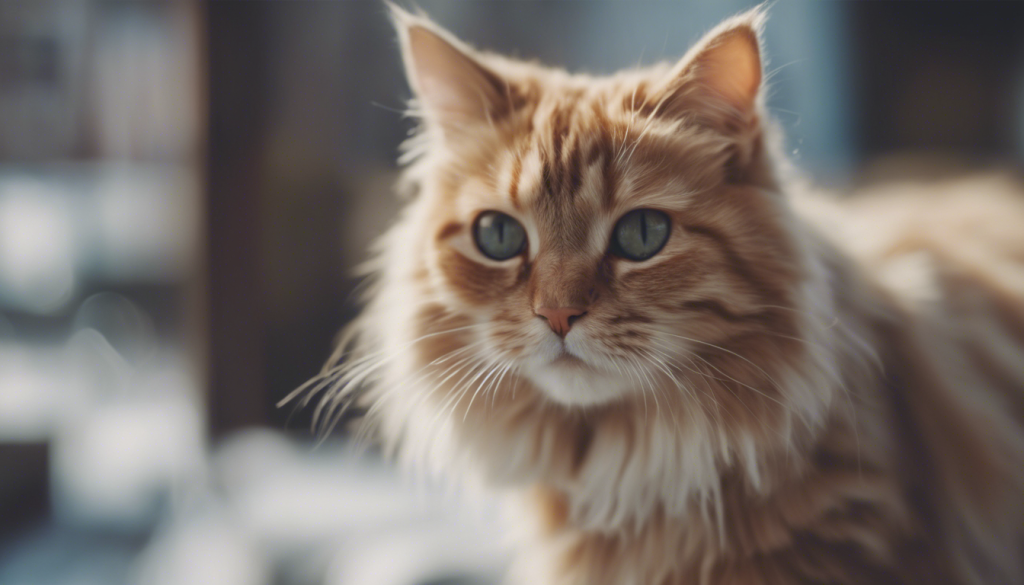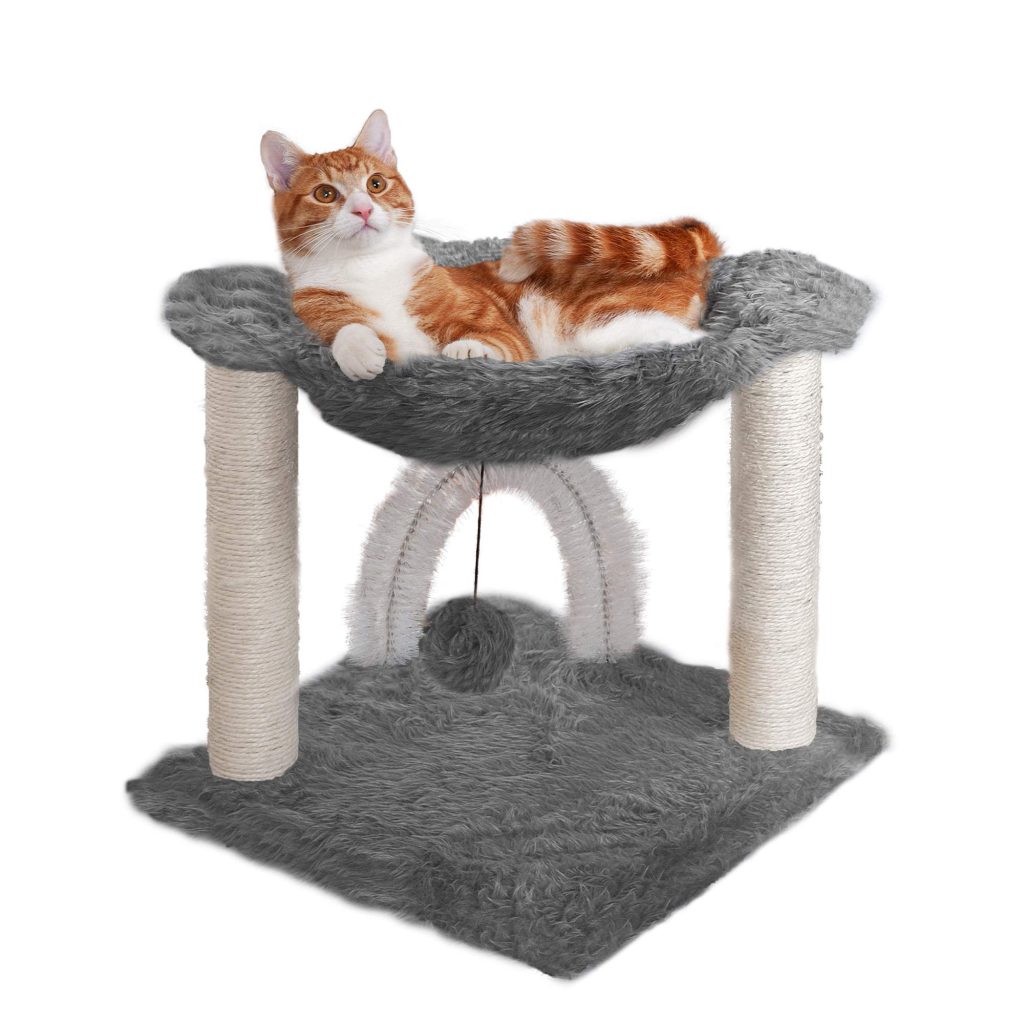
The enigmatic structure of a cat’s whiskers, known scientifically as vibrissae, constitutes an essential aspect of feline anatomy that extends far beyond mere aesthetics. These specialized tactile hairs, which are rooted deeply in the cat’s skin and innervated with a rich supply of nerves, serve a multifaceted purpose in a cat’s interaction with its environment. Their length and positioning are meticulously adapted to assist in navigation, hunting, and communication, all pivotal elements for a creature that has evolved as both a predator and a domestic companion.
Whiskers are not merely tools for measurement; they provide a comprehensive sensory feedback loop that facilitates relationship dynamics between cats and their surroundings. For instance, when a cat approaches a narrow space, its whiskers will extend outward to gauge whether it can safely fit through, thus avoiding potentially harmful situations. This behavior underscores the importance of whiskers for spatial awareness—a vital trait for both survival in the wild and agility in the home environment.
Engaging with your feline companion on a deeper level involves recognizing the integral role these sensory hairs play in expressing emotions and intentions. As cat parents, observing the intricate movements of whiskers can offer profound insights into our pets’ feelings. When a cat’s whiskers are situated forward—alert and poised—it often signals curiosity or excitement. Conversely, whiskers drawn back against the face can indicate discomfort, aggression, or fear, painting a vivid picture of the animal’s emotional state.
The significance of whiskers extends into the realm of emotional communication as well. The act of whisker twitching can accompany moments of playfulness, suggesting a readiness to pounce, a natural behavior rooted in hunting instincts. This keen sensitivity to environments translates not only to the physical world but also enhances the emotional bond between cats and their owners. A keen observer will notice these fluctuations and be able to respond aptly, fostering an environment of trust and understanding.
Furthermore, establishing a connection through whisker recognition can lead to meaningful advancements in the owner-pet relationship. Engaging in activities that stimulate exploratory behaviors, such as interactive play with feather toys or puzzle feeders, not only satisfies a cat’s inherent inquisitiveness but also allows owners to witness firsthand the delightful tapestry of whisker-driven communication. A simple game can turn into a dance of delight as the cats express their moods through their whisker movements.
This intricate understanding necessitates an immersive awareness of how whiskers function as a form of emotional expression. Quotes from renowned animal behaviorists emphasize the profound links between whisker movements and a cat’s state of mind. The more attuned you’re to these subtleties, the more your furry friend will thrive in a home built on empathy and understanding. Thus, recognizing and appreciating the nuances of whisker behavior paves the way for a deepened connection and an enriched shared life, while concurrently allowing for a unique window into the complex world of feline emotion and interaction. The whiskers, indeed, become a fascinating language unto themselves—one that speaks volumes if only one takes the time to listen.
The science behind whisker sensitivity
The extraordinary sensitivity of a cat’s whiskers, or vibrissae, can be likened to a finely tuned antenna system, intricately designed to enhance the feline’s perception of the world around it. Richly innervated with sensory receptors known as mechanoreceptors, these specialized hairs are equipped to detect even the slightest changes in the environment—an advantage that has profound implications not just for survival, but for emotional processing as well. Whiskers are capable of sensing vibrations in the air, determining distances, and even detecting obstacles, effectively enabling cats to navigate their surroundings with unparalleled astuteness.
Delving deeper into the anatomy of whiskers reveals their unique physiology. Whiskers are embedded in a follicular structure that’s surrounded by a blood supply and a multitude of nerve endings. This biological configuration allows whiskers to relay sensory information to the cat’s brain with remarkable precision. In fact, a cat’s brain dedicates approximately 12% of its sensory cortex to interpreting the signals received from these tactile hairs. Such heavy investment underscores the crucial role whiskers play in formulating a cat’s interaction with its environment and aids in developing behaviors that correspond to their emotional states, such as anxiety, contentment, or playfulness.
The sensitivity of whiskers also heightens when cats are engaged in states of alertness or arousal, fostering an acute awareness that speaks to their survival instincts. For example, a cat poised to pounce will extend its whiskers forward, a posture that amplifies their sensory input as they focus on their prey. This delicate interplay between situational awareness and emotional response culminates in behaviors that characterize the feline experience. When new stimuli are introduced, such as a novel sound or an unexpected movement, the whiskers act as a first line of defense, alerting the cat to evaluate the safety of its surroundings while concurrently reflecting its mood. Such adaptability in both attitude and reaction intensifies the bond that forms between pets and their owners, as it often incites curiosity and engagement.
This intimate relationship between whisker sensitivity and feline communication is echoed in the kaleidoscope of behavioral nuances evident in cats. For instance, when a cat plays with a toy, the subtle forward thrust of its whiskers signals excitement and readiness, while whiskers that flop awkwardly against its cheeks could indicate confusion or distress. Understanding these signals allows owners to cultivate an environment that aligns with their pet’s needs, ultimately fostering a space where emotional expression is encouraged and supported.
Moreover, embracing the science behind whisker sensitivity serves as a catalyst for enhancing training techniques. When owners become attuned to their cat’s whisker positioning, they can tailor training sessions that are responsive to their pet’s emotional climate. Using techniques such as positive reinforcement can be complemented by observing whisker movements; for example, during training periods, acknowledging a forward position of the whiskers could validate a successful command, reinforcing the desired behavior. This observant approach fosters an atmosphere of trust and respect in the human-feline relationship.
Ultimately, the science of whisker sensitivity unveils a remarkable dimension of feline behavior and emotional intricacies, marking these whiskers as not only pivotal in navigation and interaction but as significant indicators of mood and emotional health. As with any shared journey, taking the time to understand and respect the mechanisms that drive these fascinating creatures fosters deeper connections and enriches the experiences that pet owners share with their beloved companions.
Whisker positions and their meanings
The position of a cat’s whiskers often serves as an intricate indicator of its emotional landscape, each orientation revealing nuanced details about its mood and intentions. When whiskers extend outward in an alert and proud manner, the cat exudes confidence and curiosity, often eager to explore or engage with its environment or the people within it. This posture is frequently observed during moments of playful anticipation, where the feline embodies a spirit of vitality, ready to leap into action at any instant. For instance, a cat that spots a moving toy or a sunbeam dancing across the floor may exhibit this forward whisker position, accompanied by a slightly arched back and poised ears—all palpable signals of excitement.
Conversely, when a cat’s whiskers are pulled back against its face, it tends to express discomfort or a desire for retreat. That’s commonly observed in situations that provoke stress, such as loud noises, unfamiliar guests, or even during a visit to the veterinarian. The act of drawing back the whiskers communicates a defensive posture, suggesting the cat feels threatened or uneasy, which can be important information for the owner. Paying heed to such cues can significantly enhance the owner’s ability to provide comfort and create a safe environment for their feline companion.
Additionally, whisker positioning can be very telling during interactions with other pets or people. If a cat’s whiskers are sideways but still relaxed, it might indicate a neutral state, where the cat is neither aggressive nor overly cautious. However, if another cat or a dog approaches and the whiskers stiffen in an upright position, this could represent heightened alertness or a prelude to an aggressive encounter.
Another fascinating behavior linked to whisker positioning is what is termed the “whisker twitch.” This spontaneous movement involves rapid vibrations of the whiskers when a cat is excited or playing. It can be observed when the cat is stalking its prey—be it a toy mouse or a feather. The quick, animated movements of the whiskers mirror the cat’s hunting instincts and amplifies its sensory engagement with the environment. Understanding this correlation enables caregivers to facilitate appropriate play activities that satisfy these instincts, promoting mental stimulation and physical health.
As the renowned pet behaviorist John Bradshaw once remarked, “Understanding a cat’s body language is key to a successful relationship with them.” Thus, paying attention to whisker positions and the accompanying body language serves as a cornerstone for effective cat companionship. In exploring the deeper meanings behind these tactile signals, owners can adapt their interactions to suit the needs of their cats, enhancing mutual understanding and reinforcing behavioral responses through tailored engagements.
Notably, the emotional significance of whisker positioning ultimately affects the quality of the bond shared between cat and owner. When pet owners learn to interpret these subtle cues accurately, they enrich their connection with their feline friends, advancing beyond mere caretaking into a realm of genuine companionship that thrives on empathy and recognition. Key training techniques such as reward-based reinforcement become more effective, as understanding a cat’s whisker movements helps owners identify moments of readiness or stress during the training process. These insights can pivotally shape a cat’s learning experience, establishing trust and mutual respect that reverberates throughout their everyday interactions.
In decoding the meanings behind whisker positions, we unlock a vital aspect of feline communication, teaching us that each slight alteration in a cat’s whiskers carries implications not only for understanding their feelings but also for fostering a thriving relationship. By observing these delicate indicators and tailoring responses accordingly, cat owners create environments where felines can express themselves freely and safely, allowing a language of whiskers to flourish within the shared spaces of their lives.
Common whisker-related behaviors
Among the plethora of behaviors related to whiskers, one cannot ignore the compelling significance of whisker twitching—a rapid and tactile ballet that captivates the enthralled observer. This seemingly innocuous movement often accompanies moments of prey-focused intensity, symbolizing the activation of primal hunting instincts. When a cat engages in play, its whiskers may vibrate in a quick succession, mirroring the heightened state of focus and excitement that envelops it in those fleeting seconds. This behavior not only serves the cat in its role as an agile predator but also signals to watchful owners that the feline is in full swing of playfulness, ready to unleash its inner hunter. Such insights enable cat parents to tailor interactive play sessions in ways that resonate with their pets’ natural behaviors.
Another notable expression related to whisker behavior can be observed in the context of feeding. When a cat approaches its food bowl, the whiskers often twitch with anticipation and excitement, extending forward as if actively reaching out to gauge the contents before them. Conversely, when a cat appears uninterested or dissatisfied with the meal, the whiskers may droop—a visual cue that speaks volumes about its preferences and mood. This particular behavior highlights the capacity of whiskers to act as a barometer for both enthusiasm and discontent, thus enabling owners to cater to their cats’ culinary inclinations more effectively.
Whiskers also play a vital role in social interactions among felines. An intriguing mutual grooming behavior often reveals much about the bonds shared between cats. During these intimate moments, a cat’s whiskers may extend while the donor cat nuzzles against its partner, indicating trust and affection. Conversely, if a cat feels threatened during grooming, those sensitive hairs may retract slightly, serving as a clear warning sign to both parties involved. Understanding these subtleties allows owners to foster harmonious relationships among multiple pets within the same household, promoting a peaceful coexistence that echoes throughout their shared living space.
Moreover, the phenomenon of whiskers appearing particularly erect can signify assertiveness or territorial behavior. For instance, in encounters with new people or unfamiliar animals, a cat might display a significantly pronounced whisker stance, which serves as a visual declaration of confidence and readiness to defend its space. This display of whisker-positioning behavior can evolve into nuanced exchanges where the owner learns to recognize potential stress or aggression, thus preemptively diffusing tense situations by providing a comforting environment or creating distance if necessary.
The delicate interplay between whiskers and various environmental stimuli reveals an intricate tapestry of emotional state and behavioral adjustments. A cat’s response to new sounds—be it the gentle rustle of leaves outside or the unexpected slam of a door—manifests physically through its whiskers; they may retract or be thrust forward, depending on the nature of the stimulus. Such reactions can lead to unique opportunities for training and behavior modification. For instance, associating positive experiences with initially distressing sounds can gradually alter a cat’s perception, turning a previously jarring noise into a benign aspect of its surroundings.
In today’s world, where human-animal interactions often nuance the complexities of coexistence, translating these whisker-related behaviors enriches the pet-owner bond in unparalleled ways. Observing and responding to these signals conveys respect for the cat’s feelings, allowing the profound nuances that whiskers reveal to inform how owners engage in daily life with their pets. The cumulative understanding of these delicate indicators not only creates tailored training experiences but also develops a connection that transcends the ordinary, growing into a partnership founded on mutual respect and communication. Indeed, in the silent language of whiskers, we find the very essence of the feline spirit laid bare—a guide to cultivating an enlightened and harmonious bond with our beloved companions.
Interpreting your cat’s mood through whiskers
Interpreting the emotional signals conveyed through whiskers can profoundly enhance our understanding of feline moods, enriching the bond we share with our cats. A cat’s whiskers, which act as sophisticated tactile sensors, intricately reflect its emotional state through subtle movements and postures. When a cat feels content and relaxed, its whiskers may rest gently, maintaining a horizontal position that signifies peace and security. Conversely, moments of trepidation will often find the whiskers pulled back against the cheeks, a clear indication of anxiety or discomfort. A well-trained eye can discern these distinctions, allowing for timely interventions to alleviate stress and promote a nurturing atmosphere.
In addition to observing general positions, owners should also note the minute shifts in whisker behavior during various interactions. For instance, during high-energy play, a cat’s whiskers may extend forward, indicating eagerness and focus. In this state of engagement, owners can amplify the experience by introducing stimulating toys that align with the cat’s predatory instincts, thereby reinforcing the feline’s sense of joy and excitement. In scenarios where the whiskers appear to quiver slightly, that is often a signal of heightened anticipation or agitation. Recognizing this flutter can cue owners to modify the intensity of the play, ensuring that the interaction remains enjoyable rather than overwhelming.
Furthermore, the act of purring—often a hallmark of feline contentment—can be closely intertwined with whisker movement. Cats that are enveloped in comfortable surroundings, entwined in gentle petting, will frequently emit a rhythmic purr that harmonizes with the serene repose of their whiskers. Owners who take the time to appreciate the melodic sounds alongside the corresponding whisker behavior foster a deeper connection, promoting a nurturing relationship rooted in collaborative communication.
Understanding the role of whiskers in conveying moods also extends to potential conflicts, particularly in multi-pet households. When introducing a new cat or animal into the home, the reactions expressed through whisker movements can signal acceptance or resistance. A cat that arches its back and displays upright whiskers while encountering a newcomer may be asserting its territory or preparing for a confrontation. Recognizing such cues can enable owners to step in proactively, mitigating stressful situations with strategies to facilitate safer encounters, thus preserving harmony within the living space.
Moreover, this sensitivity towards emotional cues can be particularly beneficial in recognizing signs of discomfort during grooming or health assessments. For example, if a cat’s whiskers retract towards its face while being handled, it may indicate distress or fear about the situation. This awareness allows owners to adjust their technique—perhaps employing soothing tones or gentle, gradual movements—to foster an environment where the cat feels secure and valued, ultimately strengthening the trust within the relationship.
Quotes from esteemed feline behaviorists underscore the significance of this nuanced understanding: “Cats are never so disarming as when they’re in their element, expressing true feelings through movements including their whiskers,” emphasizes cat behaviorist Pam Johnson-Bennett. Such insights highlight that observant owners can decode their pet’s emotional narratives by closely monitoring the rhythm of their whisker movements—a symphony of signals that ultimately informs the dynamics of care and companionship.
It is essential to note that contextualizing whisker behaviors is crucial; a whisker’s position may carry different meanings depending on the environment and situation. Outside stimuli—like changes in furniture placement or the arrival of unfamiliar visitors—could provoke reactions ranging from intrigue to anxiety. Acquiring the skill to interpret these signs enriches the pet-owner bond, as it cultivates an environment of empathy and understanding. Consequently, the recognition and responsiveness to whisker behavior often serve as an emotional compass, guiding owners to nurture their cats’ needs in a way that fortifies their relationship.
Ultimately, the eloquence of a cat’s whiskers lies not merely in their movements but in the profound interactions that arise from interpreting them. By embracing the art of reading whisker signals, owners not only unlock the intricate tapestry of their cat’s emotions but also lay the groundwork for a deeper, more fulfilling companionship—one imbued with mutual respect, understanding, and, above all, love. In this delightful journey, whiskers emerge not simply as physical appendages but as vibrant threads woven into the fabric of our shared lives with these remarkable beings.







